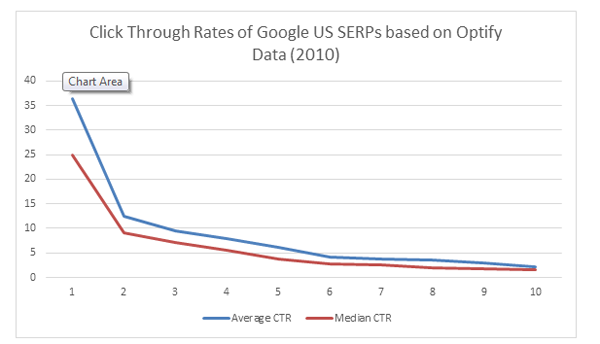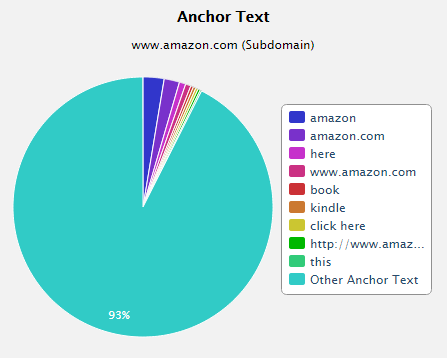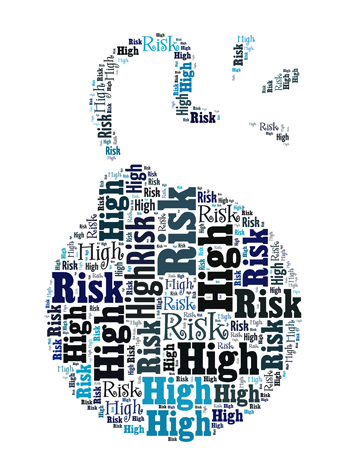SEO Risky Business for Small Businesses

Optimizing websites so they rank high in Google's search engines is big business.
Ranking in the number one position for a popular keyword can bring in roughly 36.4 percent of that keyword's traffic to your website according to Optify's 2010 CTR study. Ranking in the second position may seem like a safe bet, but study data revealed it only yields around 12 percent of the keyword's traffic.
The picture becomes grimmer as you drop into position three and below where click-thru rates drop into the low single digits with rank 10 bottoming out at 2.2 percent. With a 1655 percent difference between the first and last ranks on the first page of Google, it is no wonder companies pay serious attention to attaining the number one spot.

As the need for strong rankings became apparent to companies of all sizes, search engine optimization companies appeared to fill that need. Unfortunately, as with all industries, there were good apples and some bad ones.
In the early days, Google had a hard time distinguishing between the two sides of the SEO industry. Google bestowed high rankings to websites that followed sound, white hat strategies and to those that followed gimmicky, potentially unethical, black hat SEO strategies.
In the early days it didn't make much of a difference. A black hat SEO company could keyword stuff, cloak content, build link farms, and spam for backlinks to their heart's content and see positive boosts in Google rankings.
Google Strikes Back
The search engine rankings battlefield started to change in 2011. Google published its first of twenty-four search ranking algorithm updates, dubbed Panda, in order to remove over-optimized, low quality content websites from its top results. Continuing with the onslaught a year later in April 2012, Google published the first of three Penguin updates to the algorithm. In this strategic move, Google sought to lower or remove the rankings of websites that breached the Google Webmaster Guidelines through black hat techniques like duplicate content creation, keyword stuffing, cloaking, link farming and spam links from bad neighborhoods on the Web.
As the effects of these algorithm changes took effect, tens of thousands of websites fell from their profitable #1 positions abruptly due to the blackhat SEO practices knowingly or unknowingly used to rank their websites well in the search engines.
No Safe Quarter for Small Businesses
When Panda and Penguin first hit the scene, it looked like big brands were immune from the search engine updates while little guys suffered. Big brand names like Expedia and Halifax, until recently, seemed to weather the storm unaffected despite having used many of the techniques Google's Webmaster Guidelines warned against. This is particularly risky for small businesses because SEO companies that show case their big brand associations and results may actually be a wolf in sheep's clothing. Due to differences that exist between a big company and a small company's link profile, a blackhat SEO company can make it look like they achieved great results while actually placing your business's online rankings at extreme jeopardy.
Here's how...
A major component for any website to rank well is its back link profile. This is essentially a list of every website out on the Internet that links back to the company's website. For each record in this list, there are ratings that Google stores noting how authoritative and relevant the back linking website is for associated keyword phrase. It even keeps track of what anchor text, words used to create the actual hyperlink, is on the Web page.
Anchor Text Example

A big red flag for Google is when it sees a high percentage of anchor text over-optimized for a particular keyword phrase. There is good chance a website's rankings will be penalized If Google sees a website with 75 percent of its backlinks using the anchor text, "cheap baseball tickets", and 25 percent of the other back links using a generic brand name or the URL of the website itself as anchor text. A healthy website back link profile, on the other hand, would be the reverse image of that with 75 percent of the back link anchor text using generic brand terms and URLs with the remaining 25 percent being optimized anchor text of some variety. In the real world, it plays out a little bit differently that the clean and simple numbers used in the concept overview. Here's a snapshot of Amazon.com's back link profile using a popular back link research tool.

0.33 percent use the anchor text "Kindle". Its flagship product.
Only 0.34 percent of its keyword anchor text use the word "book", one of its major product offerings.
Only 2.62 percent of its total keyword anchor use its name.
The other 93 percent of keyword anchor text is a random summation of thousands of keywords that make up only a very tiny percentage each.
An over-optimized website on the other hand would have extremely high percentage of exact match keywords (e.g., cheap hotel tickets), anywhere between exceeding 35 percent on the low end and 60 percent on the high end according to a Search Engine Watch study and a Search Engine Journal study.

Protecting Your Small Business
Consequently, large companies were able to escape Google's wrath for a while because of their extremely large back link profiles. While their anchor text ratios may seemed okay at first glance, deeper research revealed that a number of large brands (Expedia, as a prime example) had set up old style black hat SEO techniques that were against Google's terms of  service. The genius of it at the time was that much of it was shrouded by millions of other links the companies did acquire legitimately thanks to their other media and advertising campaigns. If a small business implemented these strategies though, Google would have been quick to sniff them out due to the low number of links (hundreds or thousands) and penalize them accordingly.
service. The genius of it at the time was that much of it was shrouded by millions of other links the companies did acquire legitimately thanks to their other media and advertising campaigns. If a small business implemented these strategies though, Google would have been quick to sniff them out due to the low number of links (hundreds or thousands) and penalize them accordingly.
What Should You Be Doing Now
A sound SEO strategy in 2014 that will yield results for years to come is to blend good on-page keyword optimization with a dash of public relations. By making sure you mention the target keywords and synonyms in your <title>, and <meta> tags, Google will have an easy time figuring what keywords to use when associating your website. The main goal is to make sure your article is readable by people at the end of the day.
Once that aspect is sound, you can focus on the public relations aspect which combines promoting your article and/or website to other important websites within your industry, to key social media personalities, magazines and news organizations. An added benefit is that you gain traffic and exposure from partner websites while you wait to rank for that coveted number one spot on Google.








